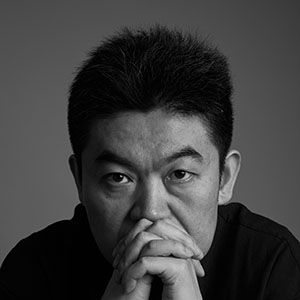Drifting in the Unknown
A reflection on spaces for reflection
At this moment in our society, reflection has somehow become a luxury given the dominance of digital media and the overflow of information and communication in everyday life. Today one is easily driven to see more but to think less, to receive more but to remember less, to go faster but to no avail.
This is a time when we have very little time for reflection, yet reflection is greatly needed. In such a context, how we create spaces for reflection becomes a very meaningful question to reflect upon.
What is a space for reflection? Is it a space for meditation? Is it a space to look outward? Or is it a space of introspection, to look inward? How can space make us reflect? I believe a space for reflection must inspire us. It must provoke a consciousness of where and when we are in our mind. It needs to create a separate situation from the familiar world; bring our mind into an unknown world from a known world.
Here is an example. Looking at a scene through a window is very familiar for us. However, once the scene outside the window is changed you feel your position is switched from inside to outside. Afterwards once the scene outside the window becomes pure darkness, you must question yourself about whether you are inside or outside because of this unknown condition you have perceived. This tells us that our ideas about things are relevant.
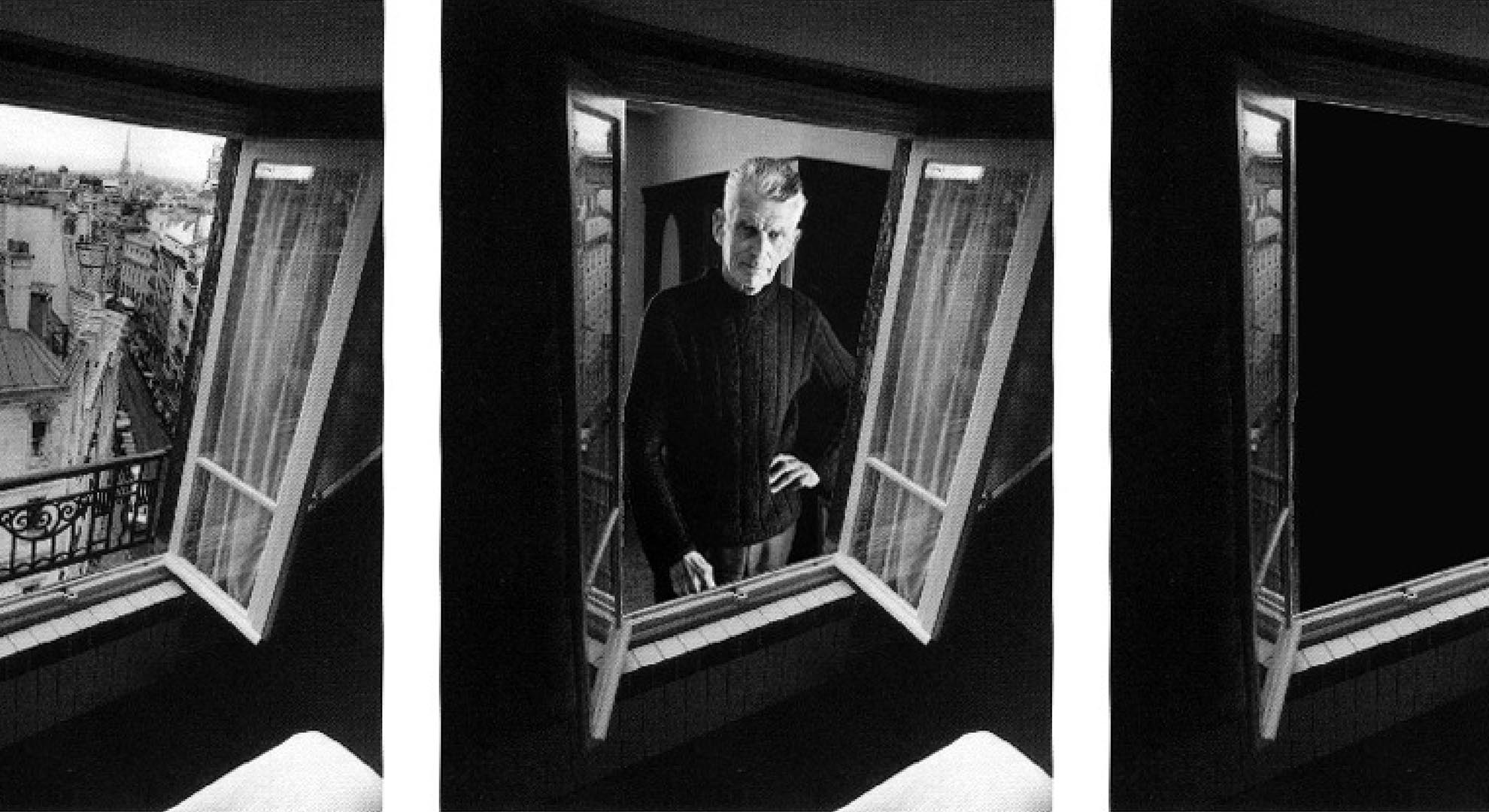
Works on “Space Odyssey” at Yale University: Outside and Inside. © HUA LI
We are so used to our familiar perceptions and knowledge of things that once a space puts us into a moment of uncertainty, curiosity, and even danger, it evokes a fresh awareness inside us, giving us a new perspective, a different vision. It starts to make us question and reflect and that is the moment we become inspired. Space thus creates wonder. And I believe that this is the meaning of a space for reflection.
A space for reflection can inspire us in many aspects: the shape, scale, light, color, sound, touch, smell, and overall atmosphere. A space for reflection provides us with intriguing experiences from all our sensations. But a space for reflection doesn’t require an explanation or description. It is silent and can only be felt rather than interpreted.
The Cliff Café and Tower House is a place for reflection on a small island, on top of a cliff 60 meters high above sea level. The design starts from a reflection about the horizon. The café, sunken into the rocky landscape, offers a cave-like experience when the visitors step down as if they were going inside the ground. At the same time, the Tower House, rises up vertically with four levels, offering various heights to overlook the ocean as the inhabitants go up.
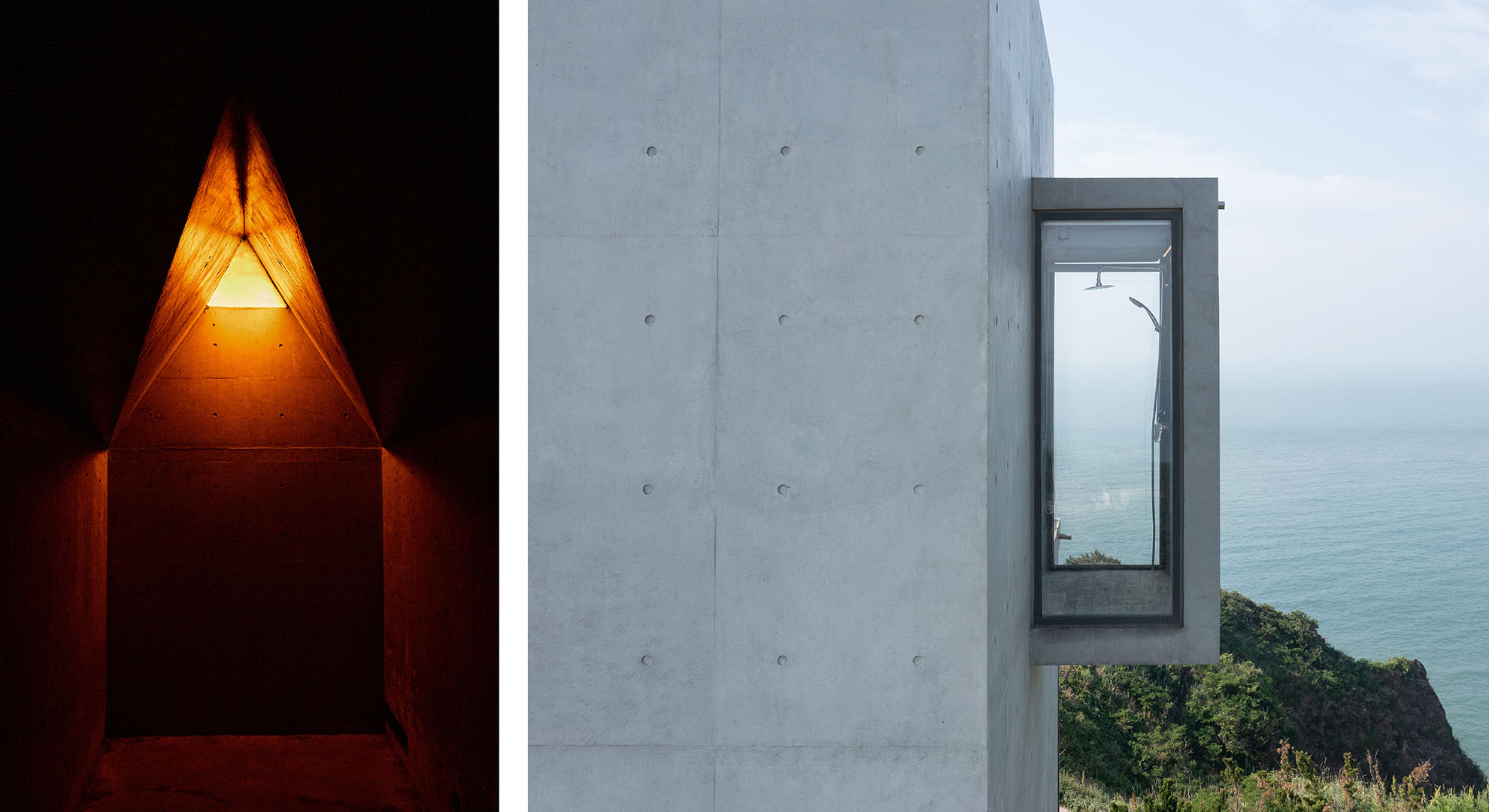
Meditation room (left), Photo © MEI Kejia. View to the shower room (right), Photo © SUN Xiangzhou. Cliff Café and Tower House, Rongcheng, Shandong, China, 2022, HUA Li/TAO.
Descending and ascending, horizontal and vertical, introverted and extroverted, the two buildings create different ways to meet the horizon. Inside the café building, the contrast between the darkness of the introverted space and the brightness of the view to the sea on the periphery strengthens the feeling of being inside the ground. The meditation space, lit from a diffused yellow skylight, puts the visitor in a spiritual mood, which is silent and calm.
The Tower House, a place for solitude, stands alone above the cliff like a fortress, anchoring into the mountain and pointing to the sky. Each floor is only 4 by 4 meters in plan providing various functions on each level, from living and dining, to study, sleeping and bathing. To inhabit this space is to hide oneself behind the surroundings of solid concrete walls while having many opportunities to look out through the various openings in different directions. The experience alternates between the tightness of the stair and the openness of each space.
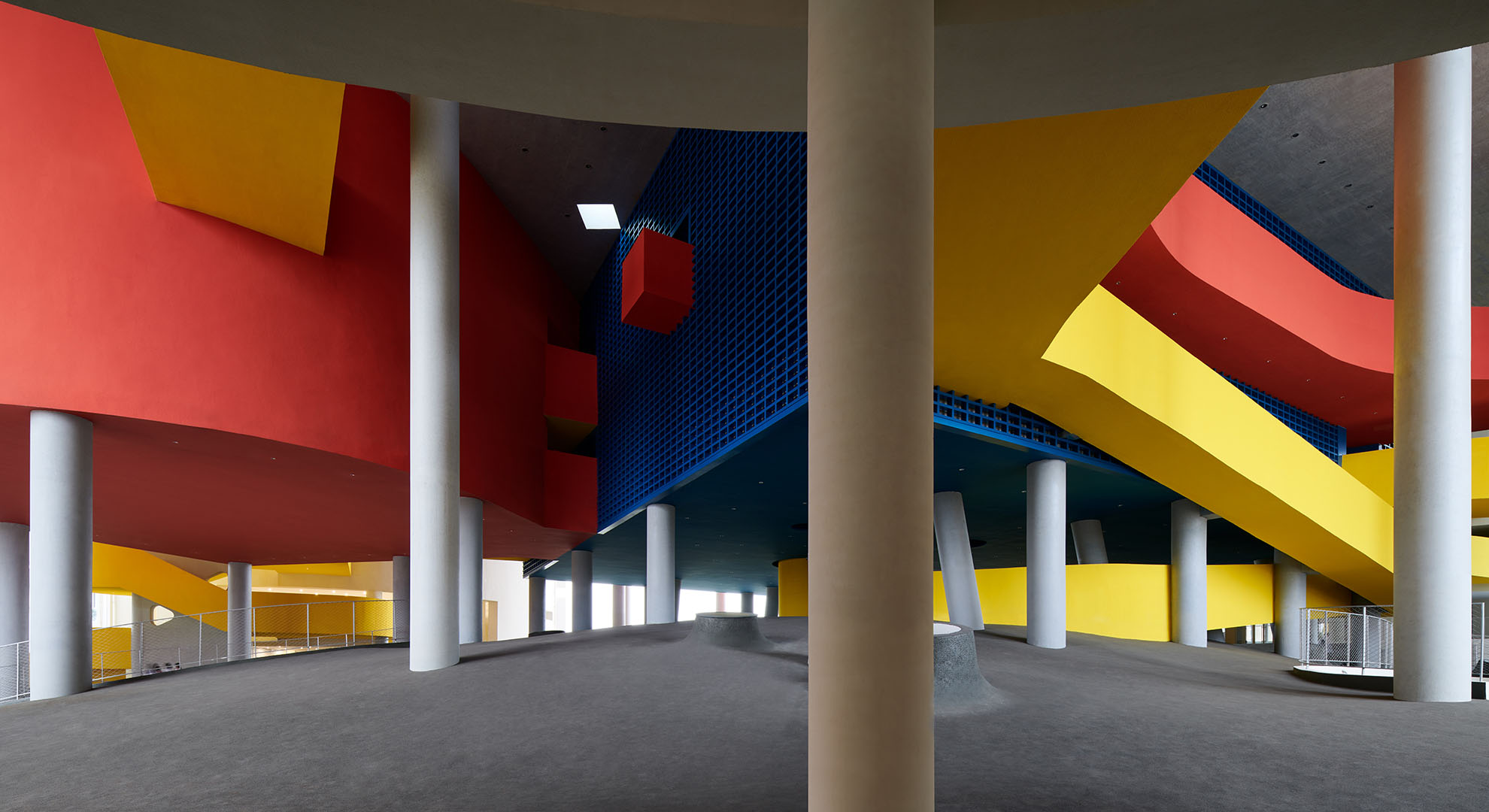
Senior High School central zone, Jiangdong Huandao Experimental School, Haikou, Hainan, China, 2022, HUA Li/TAO. Photo © CHEN Hao
In the Haikou Jiangdong Huandao Experimental School, a shaded space made of tall columns, rolling ground plane, flying ramps, and floating colored boxes, is created underneath a huge continuous concrete roof. It is intended to be like a labyrinth, giving the students a change to meander through it and even making them lose their orientation at times. Wandering through this space is like being in a jungle, always unpredictable.
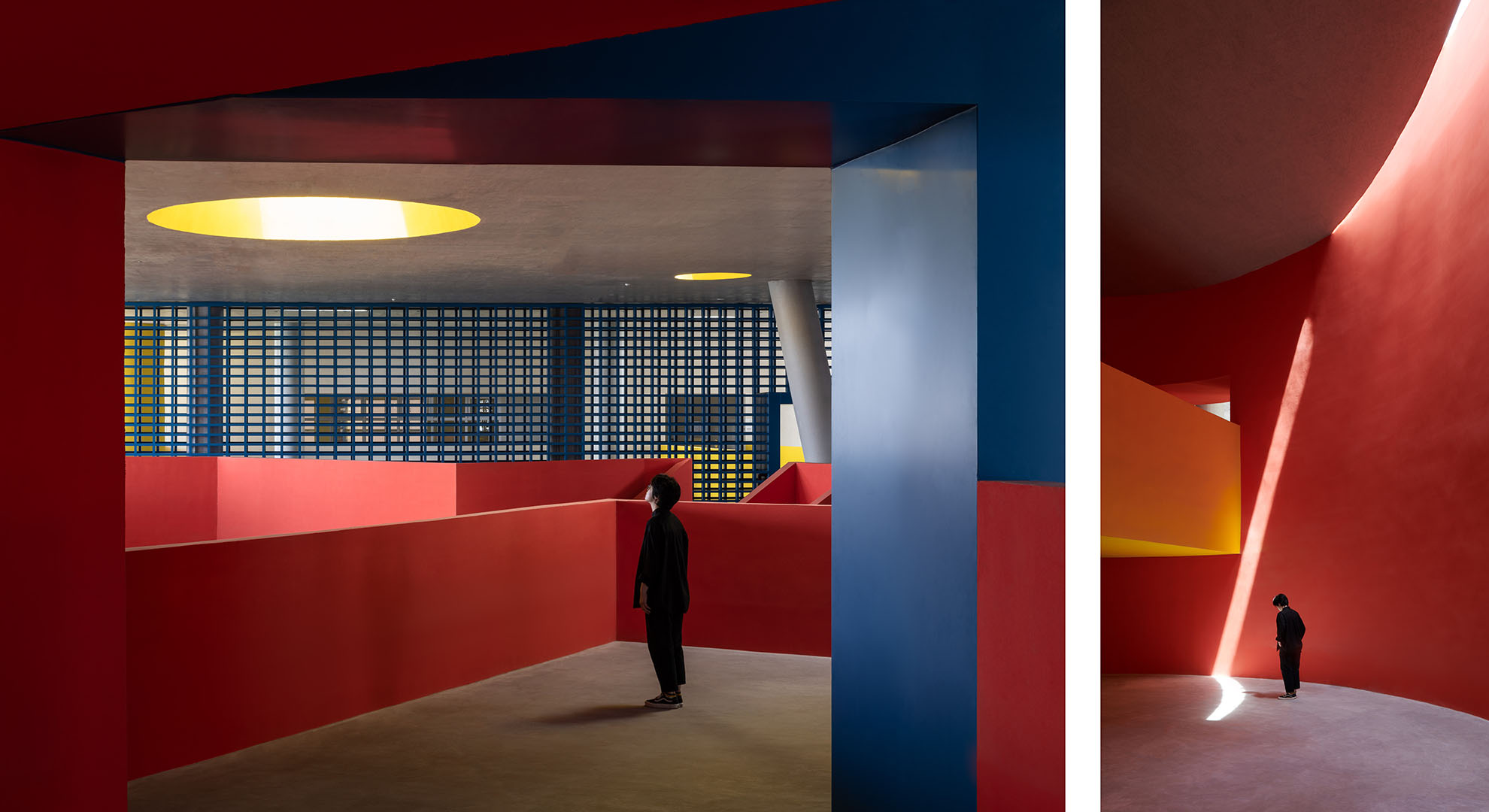
Multipurpose event hall (left). Exhibition hall (right). Jiangdong Huandao Experimental School, Haikou, Hainan, China, 2022, HUA Li/TAO. Photos © CHEN Hao
Sunlight penetrates through the holes on the roof and hits the colored walls, giving various expressions to the space at different hours of the day. Or on a cloudy day, the light diffused into the interior with reflected and mixed color tones creates a mysterious mood. There are also corners, gaps, balconies, bridges, gates; these episodes appear spontaneously, giving visitors unexpected spatial experiences. The adventure in such a complex situation stimulates curiosity and reflection.
Above all, a space for reflection is to stimulate a questioning of our existence, to open up our state of mind. A space for reflection provokes a mysterious, profound, and sometimes even a melancholy feeling. It establishes a distance between us and the daily world and it allows us to drift in endless mystery and imagination.
Main image: Cliff Café and Tower House, Rongcheng, Shandong, China, 2022, HUA Li/TAO. Photo © MEI Kejia
